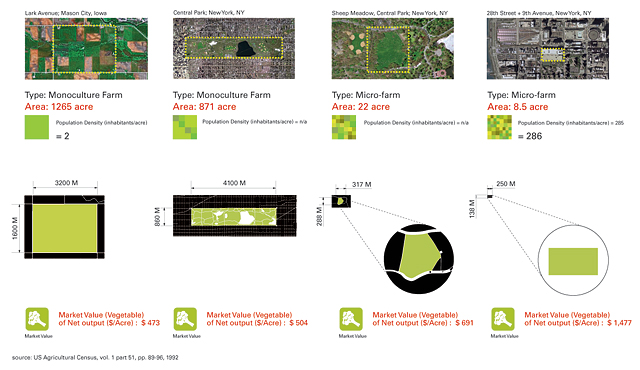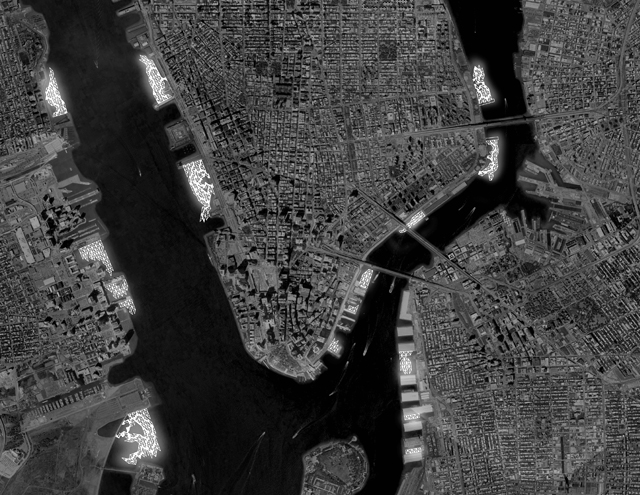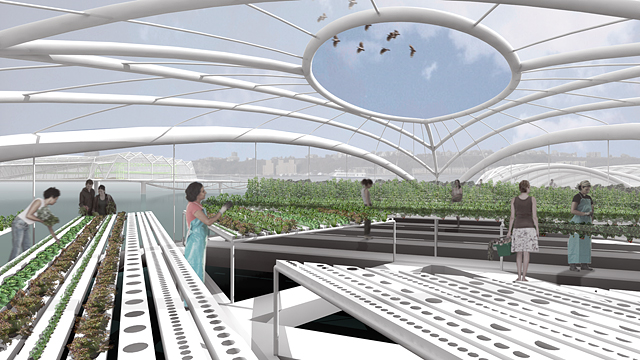Client: MODU
Type: Urban Waterfront Proposal
Size / Date: 1,000,000+ square feet / 2009
Awards: Winner, 2009 Architectural League Prize (Young Architects Forum)

The “Foodopolis” project addresses the politics, spaces, and actors at play in the urban food system—from market to table, and from local to global trade. Today, there is an urgent need to reform the global food network, both to increase food sustainability and to provide food security. “Foodopolis” envisions a series of floating farms on barges that would help meet a portion of New York City’s produce needs locally rather than relying heavily on remote sources. The greenhouse farms would be paired with two types of public spaces: public markets and outdoor parks, which would redefine the water’s edge by creating food spaces and recreational areas. The farms, markets, and parks would adapt industrial barges as an existing and economical means to support greenhouse structures. Together, they would transform New York City’s post-industrial waterfront into an infrastructure of urban food and park spaces.


External Links:
The Science Barge Demonstrates Sustainable Urban Farming (Columbia University Earth Institute)
Five Borough Farm: Seeding the Future of Urban Agriculture in NYC
Cash Crops Under Glass and Up on the Roof (NY Times)
MODU is not responsible for the content of external Internet sites
“Foodopolis” makes use of an urban space that eludes New York City’s relentless real estate demands: the seemingly undevelopable waterfront. Located just offshore, the floating greenhouse farms of “Foodopolis” would occupy zero ground area while creating a moving landscape of roofs visible from city streets. The greenhouses and barges would rise and fall with the tides (and with anticipated rising water levels), capturing rainwater for use in hydroponic farming systems.

Since hydroponic technology does not require any soil, the greenhouses would be anchored to the barges and rise with any storm surges of the river. This project forms a new, waterborne infrastructural urban edge—a “food border” that attracts both residents and tourists. In its floating food markets, elevated markets allow for open public recreation areas below: spaces that rebuild and radically re-conceive New York City’s food systems and recreation culture.
Press:
The Architect’s Newspaper (7 July 2010)
Project Team: Phu Hoang, Ammr Vandal, Edmund Kwong, Dong-Wook Wang
Credits: Arup (Structural)
